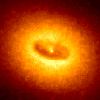

The discoveries of Antony van Leeuwenhoek (1632-1723) and Louis Pasteur (1822-1895) established the foundation for the science of microbiology. The most complex population of microorganisms in the human body is located in the oral cavity. Microecosystems exist for aerobic and anaerobic organisms. Most all (95 %) infections of the oral and maxillofacial region are mixed infection consisting of aerobic and anaerobic organisms. The microbial concentration around teeth (dental sulcus) and in dental plaque is approaching 200 billion cells/gram of sample. In a healthy patient a state of homeostasis exist with a balance between three factors: the host, the organism, and environment. An infective process (disease) occurs when an imbalance is present among these factors. Two attributes contribute to the pathogenic potential of microbes, virulence and quantity. Invasiveness, toxins, and enzymes are hallmarks of virulence. Collection of an infective specimen for culture allows identification of the microorganism and tests the sensitivity of the microorganism to antibiotics. This process is known as aerobic and anaerobic culture and sensitivity testing. In addition to the microscopic universe of aerobic and anaerobic bacteria the oral cavity contains fungi, protoza, and viruses. Treatment of infections of the oral and maxillofacial region generally require the following:
Antibiotics (oral or intravenous)
Incision an drainage (I and D) to dispose of exudate (pus)
extraoral or intraoral (I and D)
Irrigation of I and D site ("the solution to pollution is dilution")
Removal of the source of infection
Rest and recuperation mpeg ( 670 kb )
mpeg ( 670 kb )